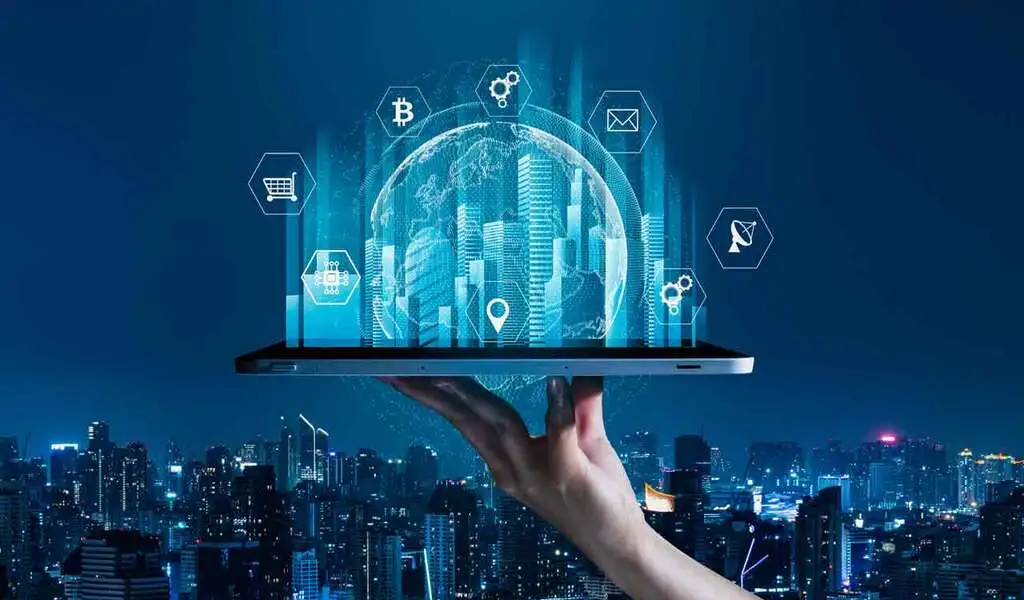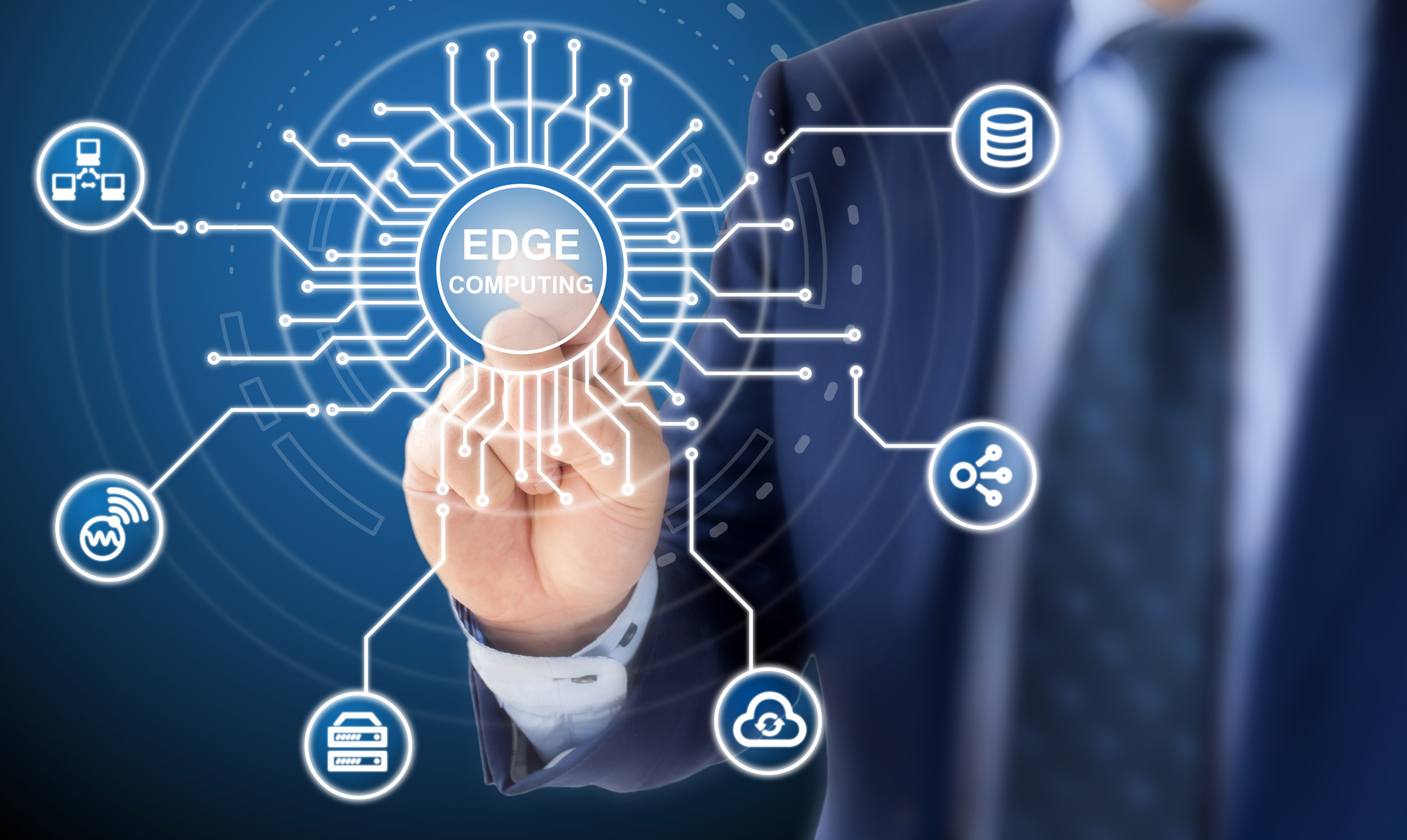Tech
Expanding on Edge Technology: Revolutionizing the Digital World

(CTN News) – In the ever-evolving digital landscape, one concept that’s at the forefront of technological innovation is “Edge Technology.” It’s not just a buzzword; it’s a revolutionary approach changing how we process and interact with data.
To truly grasp the essence of this transformative technology, we’ll explore its significance, its core components, real-world applications, advantages, and the challenges it faces.
What is Edge Computing?
Edge Technology, often synonymous with Edge Computing, is all about decentralizing data processing. In traditional cloud computing, data is sent to a central server or data center for processing.
In contrast, Edge Technology takes a localized approach by processing data closer to where it’s generated, right at the edge of the network. This concept introduces a powerful shift in how we handle data, resulting in faster and more efficient data processing.

IT expert in a blue suit clicks on a circuit diagram with the words edge computing surrounded by specific icons
The Evolution of Edge Technology
Edge Technology didn’t emerge overnight; it resulted from the digital age’s growing demands. As we entered the era of the Internet of Things (IoT) and smart devices, traditional cloud computing faced challenges in delivering real-time results.
The massive influx of data generated by these devices necessitated a more agile and responsive approach, giving birth to Edge Technology.
Key Components of Edge Technology
The fundamental components of Edge Technology are crucial to its functionality:
IoT Devices
IoT devices, including sensors, cameras, and various data-generating sensors, are the primary contributors to the wealth of data processed at the edge. These devices capture information and send it directly to nearby servers, eliminating the need for data to travel long distances.
Edge Servers
Edge servers, as the name implies, are strategically located in proximity to IoT devices. Their role is to process and manage the data collected at the edge. This distributed architecture reduces latency and ensures swift data processing.
Edge Data Centers
Think of edge data centers as miniature versions of traditional data centers, but strategically positioned to cater to the localized demands of Edge Technology. They store and manage the data generated at the edge, ensuring it’s readily available when needed.
Advantages of Edge Technology
Edge Technology offers an array of advantages that are reshaping how we approach data processing:
Reduced Latency
One of the most significant benefits is the substantial reduction in latency. With data processing occurring closer to the source, the time it takes to receive results or make decisions is dramatically shortened. This is critical for applications where real-time responsiveness is paramount.
Enhanced Security
Edge Technology inherently enhances security. Since data doesn’t traverse long distances, it’s less exposed to potential security threats and breaches during transmission. This localized processing adds an extra layer of protection, especially for sensitive data.
Scalability
Scalability is a key feature of Edge Technology. As the volume of data generated by IoT devices continues to grow, Edge solutions can adapt seamlessly. This scalability ensures that Edge Technology can keep up with the increasing demands of our connected world.
Real-World Applications of Edge Technology
The impact of Edge Technology extends to a wide array of real-world applications:
Autonomous Vehicles
For autonomous vehicles to function safely and efficiently, they require real-time data processing for decision-making. Edge computing plays a pivotal role in making split-second decisions enhancing safety on the road.
Smart Cities
In the context of smart cities, Edge Technology aids in the collection and processing of vast amounts of data. This data is used for real-time urban planning, traffic management, and enhancing the quality of life for city residents.
Healthcare
The healthcare industry is leveraging Edge Technology for remote patient monitoring and telemedicine. Data generated by medical devices can be processed at the edge, enabling healthcare professionals to provide real-time care and make critical decisions promptly.
Challenges and Limitations
While Edge Technology has made impressive strides, it’s not without its challenges:
Data Management
Managing data at the edge can be complex, requiring efficient storage and retrieval mechanisms. As the volume of data continues to grow, maintaining organized and easily accessible data becomes crucial.
Connectivity
Ensuring constant connectivity between edge devices and servers is paramount. Even momentary disruptions can lead to gaps in data processing and decision-making.
Security Concerns
While Edge Technology enhances security, it also introduces new security concerns. Protecting data at the edge from potential threats and breaches is an ongoing challenge that demands constant vigilance.
The Future of Edge Technology
The future of Edge Technology is incredibly promising. As IoT devices proliferate and our reliance on real-time data processing grows, Edge Technology will undoubtedly play a pivotal role in shaping the digital landscape. The evolution of hardware and software will bring even more efficient edge solutions to the forefront.
Conclusion
In conclusion, Edge Technology is more than just a technological advancement; it’s a revolution in data processing. By bringing computation closer to the data source, it has redefined how we handle and utilize information. The advantages of reduced latency, enhanced security, and scalability are just the tip of the iceberg. As we progress, Edge Technology will be an integral part of our increasingly connected world.
FAQs
1. What is the primary advantage of Edge Technology?
- The primary advantage of Edge Technology is the significant reduction in data processing latency, leading to quicker response times.
2. How does Edge Technology enhance security?
- Edge Technology enhances security by processing data locally, reducing the risk of data breaches during long-distance transmission.
3. What are some real-world applications of Edge Technology?
- Edge Technology is used in autonomous vehicles, smart cities, and healthcare for real-time data processing and decision-making.
4. What are the key components of Edge Technology?
- The key components include IoT devices, edge servers, and edge data centers.
5. What challenges does Edge Technology face?
- Edge Technology faces challenges related to data management, connectivity, and security concerns, especially as the volume of data increases.




























